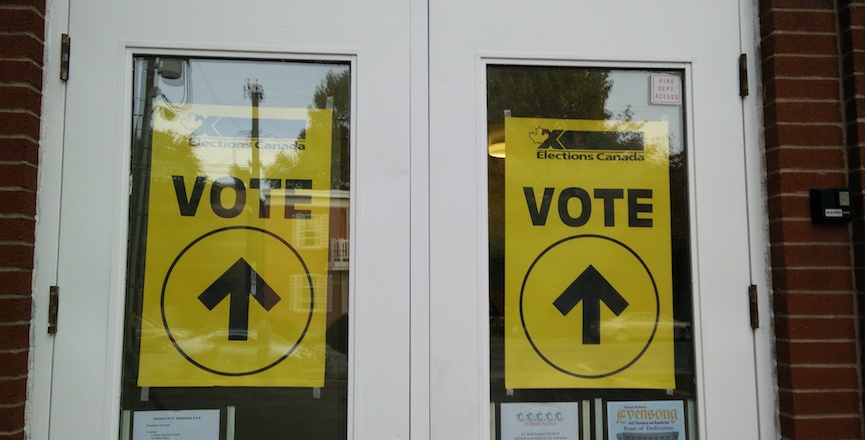The Yukon Government is forming a non-partisan commission to study electoral reform in the Yukon. In response to that welcome initiative, I am writing a series of articles examining an array of existing electoral systems worldwide, as well as some unique, new systems as yet untried.
In August of 2018, the population of Yukon was 38,993. The population of the Whitehorse area — including the city, Mount Lorne and Lake Laberge — was 30,238. Currently, 22 per cent of the population is represented by six sparsely populated ridings.
As Canadians, we have always accommodated remote districts by making sure that sparsely populated, geographically large, and remote areas have regional representation.
British Columbia addresses this challenge, in their upcoming referendum on electoral reform, with a Rural-Urban choice for voters. They suggest two different proportional electoral systems, Single Transferable Vote, with ranked ballots, for urban regions, and Mixed Member Proportional for rural and remote regions. Interestingly, the Fair Vote Canada version of the Rural-Urban solution has MMP for urban regions and STV in rural regions.
Neither of these systems would work in Yukon because they require the pairing of ridings into larger constituencies, something not feasible because of the size and uniqueness of the six remote Yukon ridings.
Fair Vote Canada also suggests using Alternative Voting system, AV, using a simple ranked ballot, to elect single representatives in thinly populated remote ridings. This is something we may wish to consider.
A Made-in-Yukon Urban-Rural split that addresses our unique circumstances could use Alternative voting, AV, in remote ridings and Dual Member Proportional, DMP, in the Whitehorse area.
With DMP, ridings are paired into larger constituencies, each with two MLAs. The ballots show each party with a single candidate. Voters mark a single “X”. The first seat in each constituency is filled by the candidate with the most votes. The second seats are awarded to parties according to the proportional support in the entire Whitehorse area. The number of seats each party has already won is subtracted from the number of seats they entitled to. Candidates filling the second seats are individuals who ran in the area and did well, but failed to win their seats. DMP is a good choice for the Whitehorse area because there is no need to add seats in order to maintain proportional representation.
Alternative voting, AV, which uses ranked ballots, would be a fair system to use in the remote constituencies. The results are not proportional. But voters would, at the very least, have a representative who has broad popular support. This is better than having an MLA with only 35 per cent of votes and who is under no obligation to serve the interests of the remaining 65 per cent.
Here is the list of criteria for an effective and fair electoral system gleaned from exchanges with Yukoners.
- Make all, or most, votes to count.
- Maintain regional representation.
- Do not significantly increase the number of seats in parliament or legislature.
- Do not significantly increase the costs of elections.
- Keep extremists out.
- Have an electoral system that people can understand when they go to the polls.
- Resistance to undo influence by power groups
Here is how using a Made-in-Yukon Urban-Rural split would work in Yukon.
- The Whitehorse area would have perfect proportional representation. Each of the six remote constituencies would have a representative based on preference. This is much fairer than First Past the Post, but not proportional. In the scenario described above, a minimum of 78 per cent of votes would count.
- Regional representation for remote communities would remain the same.Regional representation within the Whitehorse basin would be thinned somewhat. However, the top-up, proportional, seats would be awarded to candidates who ran in the region and are known.
- With both DMP or AV, the size of our legislature would remain exactly the same.
- The costs of elections would not significantly increase.
- Vote splitting, a way for extremists to gain power, is not possible in electoral systems using either ranked ballots or in proportional electoral systems.
- With DMP, the ballot is simple. AV uses ranked ballots which are easy. Calculating election results would be somewhat complicated.
- Corporations, unions or religions would have to spread their influence dollars further. Expect negative campaigning from these groups when confronted with the possibility any proportional or preferential electoral system.
A Made-in-Yukon Urban-Rural split is just one of many options for an electoral system that might serve Yukon well. If I had one request for the commission on electoral reform, it would be for them to ask Yukoners what is most important to them about a Made-in-Yukon electoral system. That way the commission could determine which system meets Yukon’s requirements best.
The Yukon Government now has a survey up asking Yukoners to state their electoral preferences. If you care about having a fair electoral system, please fill it out here. And if you care passionately about democracy, share!
Yukon is full of artists, thinkers, eccentrics and rabble-rousing political trouble makers. From the windows of her Acting Out Studio, Linda Leon observes the view from North. Every good artist knows that you have to stand far away to get a full perspective.
Image: Mike Gifford/Flickr
Help make rabble sustainable. Please consider supporting our work with a monthly donation. Support rabble.ca today for as little as $1 per month!





